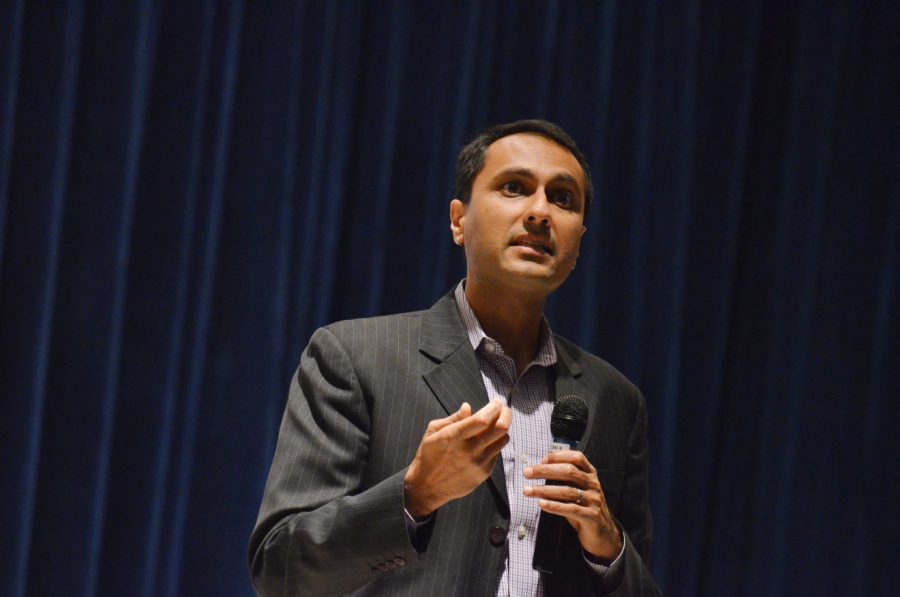Patel urges students to be diverse
October 27, 2014
Eboo Patel, founder and president of the Interfaith Youth Core, told students Monday that every person is responsible for the growth of a diverse, accepting and great community.
The Interfaith Youth Core is a community effort to bring together people from all walks of life and to express a message to young people that they can have their own identity and still find peace with others.
Patel immediately began to explain his goal: to give the audience an enriched understanding of the idea of not just diversity, but pluralism.
“Think about this: America is the most religiously diverse land in human history, and it’s in one of the most religiously tense times of the world,” he said.
Patel said diverse doesn’t always mean good, citing countries where culture clashes lead to hatred and violence. He said diversity is just the first step to creating a more powerful and united community; the second is accepting and growing from that point, known as pluralism.
“Pluralism, the proactive and positive view of diverse engagements to reach creative and positive ends,” he said.
To be a pluralist, Patel said three conditions need to be met: First, a respect of identity for one’s self and others. The next step is to foster and care for the relationships between communities, allowing them to get along. Finally, people have to find a way to motivate these groups within the community and drive them toward a common good, ultimately connecting cultures and eliminating ignorance.
“You can’t call yourself an educated person if you only know the bad parts of other cultures,” he said.
Denise Rode, director of First- and Second-Year Experience, said the choice to make Patel’s book, “Acts of Faith,” the common reading book for the year was based on Patel’s struggle with his identity in his young adult life and how students may relate.
“There were several reasons for the choice: It deals with dimensions of diversity not commonly spoken about in NIU, and Dr. Patel’s personal life and story relates with students here greatly,” Rode said. “His life can be drawn with many similarities and differences, giving good opportunities for students to compare and contrast and learn a positive message in the process.”







